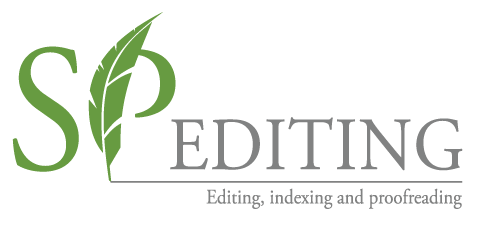SP Editing is a member of IPED – the Institute of Professional Editors. The brances of IPED provide events and workshops for editors and proofreaders. This means we are kept up to date with the latest knowledge to help perfect your writing.
After an author finishes writing, there are a few other experts that handle the text. An editor, an indexer and various other people are in the chain. As it goes further along it becomes closer to complete – but it needs a final polish to be the best that it can be. A proofreader provides the final buffing and shining process.
What is involved in proofreading?
Once your document has had an edit at the ‘macro’ level it comes to the proofreader for a close read of the text. The proofreader will examine it carefully for anything that needs attention at ‘micro’ level. The proofreader scrutinises every single word. Once a text reaches the proofreading stage, it should not need changes in style and larger-scale meaning. What is needed is the attention that will make a document consistent (within itself and with other similar documents) and appropriate to conventions (for example Australian English vs US English spelling). It should also look professional.
Here are a few examples of what we look at:
- Spelling – are we going with -ise or -ize? -ible or -able?
- Grammar – we can detect many subtleties that will make a big difference… or is it ‘which will make a big difference’?
- Punctuation – keeping those pesky apostrophes in the right places, and correctly placing a semi-colon. And what about the different dashes? When do I need an en dash?
- Capitalisation – we try to keep it keep it minimal.
- Format – makes a huge difference to the look and feel of a document. Do all our font sizes match nicely? Have we any stray bolds that need reining in?
- List structure – we examine format, consistency of grammar and punctuation to make sure your bullet points are correct.
This is a basic proofreader’s list, but there is plenty more that we can do, depending on what we find as we go. For example, SP Editing is quite familiar with biological and veterinary terms, and can often find and correct small factual errors. There is also inclusive language to consider – for example we remove the gender specificity from a document.
What tools are used?
We do most of our proofreading in Microsoft Word, which enables us to make track changes and comments. You can then go in and either accept or reject our suggested changes, and it is our preferred method. We can also work on pdf documents, adding ‘sticky notes’ and highlights in Adobe Acrobat to make suggestions. This method is not as fast as track changes, but sometimes a pdf is what you have to work with. This applies especially if the writer has prepared the document in a program like InDesign. Rarely, we work in hard copy, making pencil notes and proofreader’s marks on the paper document.
The ‘tools’ of our trade are the SP Editing eyes and brain, and a good style guide. We use the Style Manual for authors, editors and printers, Sixth Edition (seventh coming soon!). We also use a couple of dictionaries and a thesaurus, including a few specialist publications such as Saunders Veterinary Dictionary. In addition we sometimes call upon some proofreader’s tools that work with Word: PerfectIt, PhraseExpress and Editor’s Toolkit. So, as well as a sharp attention to detail, we have a range of helpful resources for proofreading all sorts of material.
But surely I can run it through a spell-check myself?
Writers sometimes ask this question. It is not advisable to rely on Word or on your own eyes and brain to locate mistakes or details that could be changed. Certainly you can do a lot with the help of the tools I have mentioned, but it is highly unlikely that you will be able to pick up everything. Even when you scrutinise a single page for half an hour you can easily miss things. The reasons for this are that you are an expert in writing about your topic, or on coordinating publications. You cannot also be an expert in proofreading. Also, it is your own project, and this makes you too ‘close’ to be objective. Proofreaders should be at a distance from the work.
Leave it to SP Editing – send your final stage work to us and we will subject it to the nit-picking that will make it perfect!
Click to contact us for more information about editing or email on sally.pope@spediting.com.au or call on 0425 777 427
